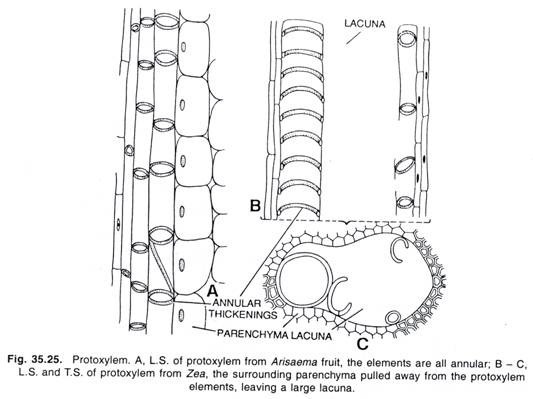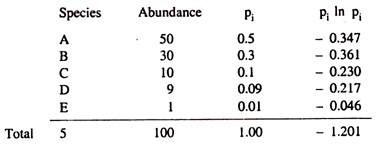ADVERTISEMENTS:
Here is a term paper on the aerobic and anaerobic respiration.
Term Paper on the Types of Respiration
Term Paper # 1. Aerobic Respiration:
Aerobic means “with air”. This type of respiration needs oxygen for it to occur, so it is called aerobic respiration.
ADVERTISEMENTS:
The word equation for aerobic respiration is:
The chemical equation is:
The energy is stored in 38 molecules of ATP. Aerobic respiration occurs in two steps, glycolysis and Krebs cycle.
ADVERTISEMENTS:
In the above equations, we see that glucose is broken down by oxygen to release energy with carbon dioxide and water being produced as by-products of the reaction. Approximately 2900 kJ of energy is released when one mole of glucose is broken down.
The released energy is used to make a special energy molecule called Adenosine Triphosphate (ATP). ATP is where the energy is stored for use later on by the body. Aerobic respiration occurs in plants as well as animals. Oxygen enters plant cells through the stomata. Plants produce their food via photosynthesis and release energy from it through the process of respiration.
During the day, both photosynthesis and respiration take place at the same time though photosynthesis is occurring at a faster rate. At night, when there is no light, only respiration takes place.
Glycolysis:
It is the first step of respiration which is common for both aerobic and anaerobic respiration and occurs in the cytoplasm. Respiratory substrate glucose is double phosphorylated before it undergoes lysis to produce 3-carbon compound pyruvate. Glyceraldehyde phosphate is produced as intermediate product when it changes to pyruvate. NADH2 and ATP is produced as energy molecules.
Equation:
C6H12O6 + 2ADP + 2Pi + 2NAD + enzyme in cytoplasm → 2C3H4O3 + 2ATP + 2NADH2
Krebs Cycle:
ADVERTISEMENTS:
Pyruvic acid or pyruvate enters mitochondria. It undergoes oxidative decarboxylation to produce acetyl CoA, carbon dioxide and NADH2. Acetyl CoA enters Krebs cycle. Here two decarboxylation, four dehydrogenations and one phosphorylation or ATP synthesis occurs.
Pyruvate + NAD+ + CoA → Acetyl CoA +NADH2 + CO2
Acetyl CoA + 3NAD+ + FAD → CoA +3NADH2 + FADH2 + 2CO2
Term Paper # 2. Anaerobic Respiration:
ADVERTISEMENTS:
Anaerobic means without air (“an” means without). Sometimes there is not enough oxygen available for animals and plants to respire. However, they need the energy to survive. Hence they carry out respiration in the absence of oxygen to produce the energy required. This process of respiration in the absence of oxygen is called anaerobic respiration.
a) In Animals:
The muscles need oxygen and glucose to respire aerobically and produce the energy they require. The oxygen and glucose are carried to the muscle blood. However, when vigorous exercise is carried out, heart and lungs are unable to get sufficient oxygen to the muscles for muscles to respire. In this case, muscles carry out anaerobic respiration.
The chemical equation for anaerobic respiration is:
Anaerobic respiration is not as efficient as aerobic, and only a small amount of energy is released. This is because glucose is partially broken down and a poisonous chemical, lactic acid is also produced, when builds up in the body it stops the muscles from working and causes a cramp.
To remove the lactic acid from the body, oxygen is needed. The amount of oxygen required to break down the lactic acid is referred to as the oxygen debt. Anaerobic respiration occurs in many lower organisms, e.g. certain bacteria, yeast.
In the human body, it regularly occurs in red blood cells and in muscles (striated muscles) during heavy exercise. Anaerobic respiration occurs entirely in the cytoplasm. It has two steps. The first step is glycolysis. Here, respiratory substrate glucose breakdown into two molecules of pyruvate, ATP and NADH2.
Pyruvate is converted into ethyl alcohol (C2H5OH) in yeast and certain bacteria. It is changed to lactic acid (CH3CHOH.COOH). In muscle cells when oxygen utilization is faster than its availability as during vigorous exercise, it creates an oxygen debt in the body. No such change occurs in blood corpuscles.
ADVERTISEMENTS:
In Yeast Glucose in Cytoplasm:
2 Glucose → 2 Pyruvate C3H4O3 → Ethanol C2H5OH +CO2+ 2 ATP
In muscle cells:
2 Glucose → 2 Pyruvate C3H4O3 → Lactic Acid CH3CHOHCOOH +CO2 + 2 ATP
b) In Plants:
The oxygen supply to plants can also run out. This happens, for example, if the soil gets waterlogged. In this case, plants obtain their energy via anaerobic respiration. Below is the chemical equation for anaerobic respiration.
ADVERTISEMENTS:
Respiration in Plants:
When the above reaction occurs in yeast cells, it is referred to as fermentation. Fermentation is the process used for baking bread and brewing alcohol.




